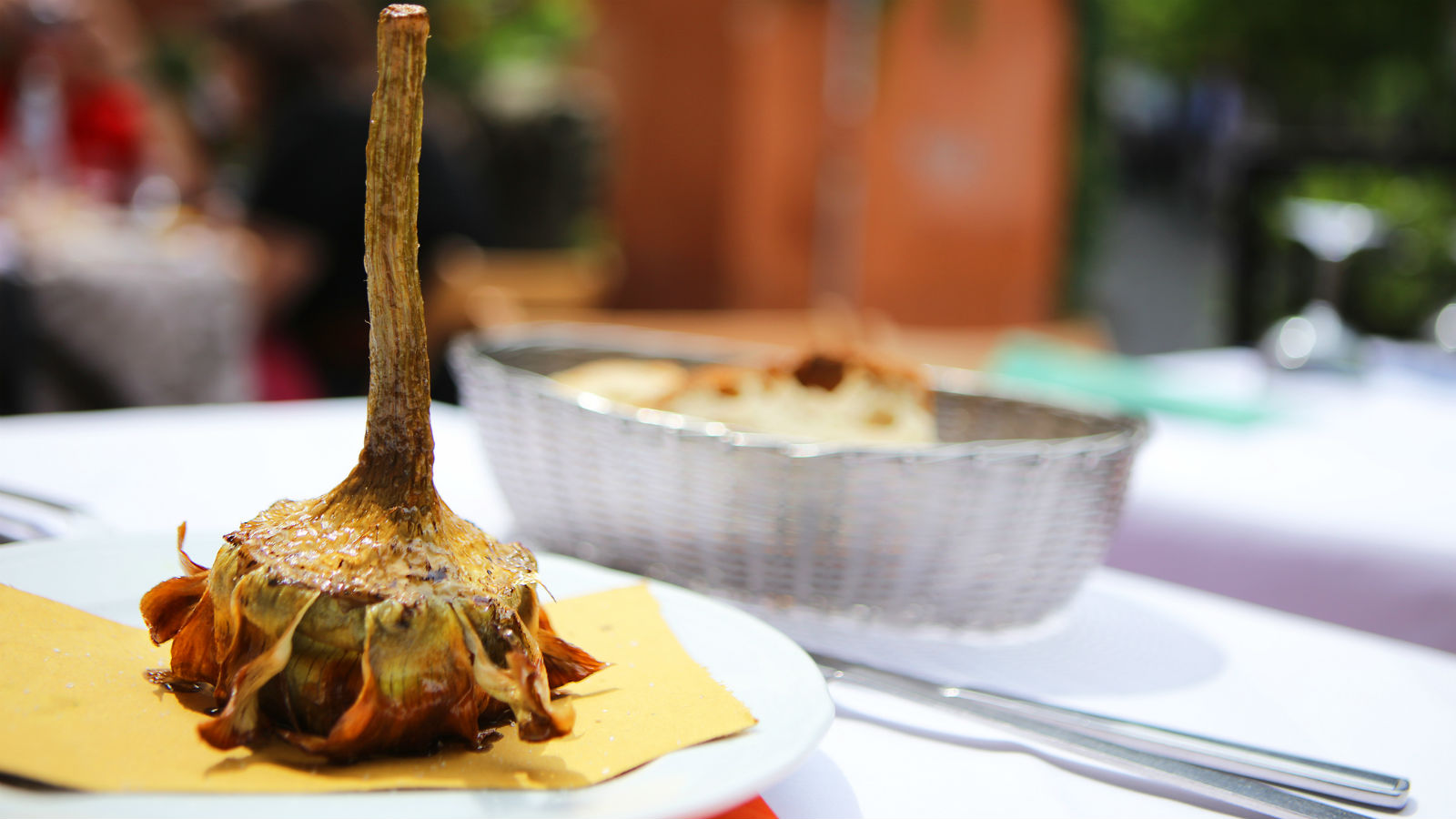Jewish-Style Fried Artichokes
Carciofi alla Giudia
Like many Jewish travelers, I have a tendency to seek out the Jewish connections in any city I visit. Stumbling across a generations-old deli, say, or a stone building etched with a Star of David from its former life as a synagogue, helps me feel at home when I am abroad. For Jews spending time in Rome, no trip is complete without a trek to the Roman Ghetto and a taste of Carciofi alla Guidia, literally “Jewish-Style Artichokes.”Known for their delicate chrysanthemum shape and crispy, salt-kissed taste, fried artichokes are a popular dish in restaurants across Italy’s largest city. Their history however, stems back to 16th century, when Roman Jews were confined to an overcrowded, impoverished ghetto. Deep fried artichokes might seem like a delicacy now, but according to Matthew Goodman who authored, Jewish Food: The World at Table, “food [in the ghetto] was scarce [and] frying was the cheapest and easiest option of food preparations.” jewish style fried artichokes
Goodman says that today, visitors to Rome can dine at Al Pompiere and La Taverna del Ghetto (kosher), which capitalize on the historical tourism industry by serving carciofi alla guida, along with other traditional Jewish Italian dishes.
For cooks feeling adventurous enough to try this at home, Joyce Goldstein’s celebrated cookbook, Cucina Ebraica, includes a painstaking (but delicious) recipe for carciofi alla guidia. The recipe was born of the year-long trial and error testing process Goldstein took to persuade the Green Globe artichokes grown in America to mimic their smaller, more tender Italian cousins. Her recipe introduction reads like an apology for America’s clunky, oafish chokes: “They look easy: just pound the chokes open and fry, but–the stems are tough! The leaves fall off!”
The recipe below offers a simplified adaptation–really more of a riff–on Goldstein’s recipe, which attempts to capture the culinary essence of the original, without confining the cook to many frustrated hours in the kitchen.
Ingredients
4 medium sized artichokes
1 lemon
plenty of olive oil
sea salt to taste
Directions
Fill a large bowl with water and the juice of one lemon. Working one artichoke at a time, trim the stem to 1 1/2–2 inches. Using a vegetable peeler, remove the outer dark green layer of the stem, revealing the softer, lighter green center. Cut off the artichoke’s thorny top (horizontally) using a serrated knife and then carefully slice the artichoke in half, (vertically).
Remove the artichoke’s tough outer leaves until only the soft inner leaves remain. Using a small spoon, remove the hairy “choke” at the center of each artichoke half. (It may seem like you are wasting a lot of the plant –which is kind of true. Assuage your guilt by composting them!)
At this point, open your windows and turn on a fan!
Fry #1: Select a pot that is large enough to comfortably hold all of the artichoke halves. Place them in the pot, fill with oil until chokes are half covered. Then add water to cover. Bring pot to a simmer and cook, uncovered, about 15 minutes until they are cooked but not too soft. Remove with tongs and place on a platter.
Fry #2: Heat about one inch of oil in a cast iron pan (or other heavy pan). Using a pair of tongs, and lots of care, place the choke halves side down in the oil. Be really careful–hot oil splatters and hurts.
Fry for about 12 minutes, flipping the chokes halfway through, until brown and crispy on both sides. Turn off the heat and remove the fried chokes with tongs. Place onto paper towels to drain. Sprinkle with salt and serve warm.



